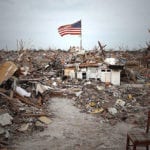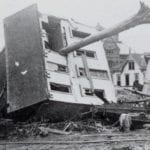 Movies and TV
Movies and TV  Movies and TV
Movies and TV  Creepy
Creepy 10 Eerie & Mysterious Ghosts of the Pacific Coast
 Weird Stuff
Weird Stuff 10 Typos That Accidentally Changed History
 History
History 10 Times Trickery Won Battles
 Technology
Technology 10 Awesome Upgrades to Common Household Items
 Misconceptions
Misconceptions 10 Hilarious (and Totally Wrong) Misconceptions About Childbirth
 Weird Stuff
Weird Stuff 10 Warning Labels That Exist Because Someone Actually Tried It
 Health
Health Ten Confounding New Inventions from the World of Biomedicine
 Creepy
Creepy 10 Death Superstitions That Will Give You the Creeps
 Movies and TV
Movies and TV 10 Movies That Get Elite Jobs Right, According to Experts
 Movies and TV
Movies and TV 10 Most Realistic Medical TV Shows of All Time
 Creepy
Creepy 10 Eerie & Mysterious Ghosts of the Pacific Coast
 Weird Stuff
Weird Stuff 10 Typos That Accidentally Changed History
Who's Behind Listverse?

Jamie Frater
Head Editor
Jamie founded Listverse due to an insatiable desire to share fascinating, obscure, and bizarre facts. He has been a guest speaker on numerous national radio and television stations and is a five time published author.
More About Us History
History 10 Times Trickery Won Battles
 Technology
Technology 10 Awesome Upgrades to Common Household Items
 Misconceptions
Misconceptions 10 Hilarious (and Totally Wrong) Misconceptions About Childbirth
 Weird Stuff
Weird Stuff 10 Warning Labels That Exist Because Someone Actually Tried It
 Health
Health Ten Confounding New Inventions from the World of Biomedicine
 Creepy
Creepy 10 Death Superstitions That Will Give You the Creeps
 Movies and TV
Movies and TV 10 Movies That Get Elite Jobs Right, According to Experts
Top 10 Tragic Stadium Disasters
Modern stadiums are the Coliseums of our time and have been witness to some of the greatest athletic and sports achievements. They have also, however, seen numerous tragedies within their walls and undoubtedly have the many ghosts of those tragedies interwoven into the framework of their structures. Here are just 10 of them.
10 Roof Collapse At Stanford-Cal ‘Big Game’
San Francisco Field, 1900
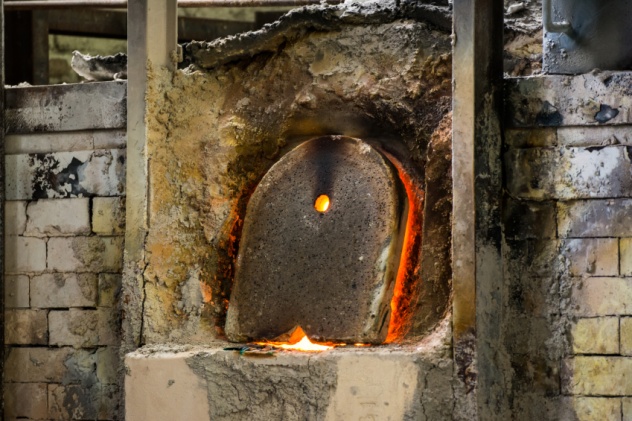
The (American) football game between Stanford University and the University of California Berkeley on Thanksgiving Day 1900, the 10th contest between the two colleges, was much anticipated, as it always was. This time, it was being referred to as the “Big Game.” Stanford’s stadium in San Francisco’s Mission District was little more than a field, with no adequate stands for the many fans who would attend. Makeshift stands were hastily built in the days leading up to the contest.
Fans who weren’t willing to pay the $1 charge to sit in the grounds perched themselves anywhere they could to get a view of the action. One of these places was atop the Pacific Glass Works building opposite the field, a vantage point which offered an unobstructed view of the game. People were hired to keep fans off the roof of the plant, which was not built to withstand any weight at all. However, it was rumored that they accepted “fees” in exchange for entry onto the roof. (They probably couldn’t have stopped the onslaught of fans, anyway.)
It was estimated that 400 people were on the structure when it finally did collapse around 20 minutes after the game commenced. Inside the building below were 15 tons of molten glass and a furnace with a surface temperature of almost 500 degrees. A workman inside told reporters that he saw a young man fall and hit the furnace, and the heat made him “curl up like a worm.”
The accident claimed 22 lives, and almost 100 more suffered serious injury. It was the worst sporting disaster in US history. San Francisco Field is no longer there, and there is no monument to mark the disaster. A university building now stands on the site of the tragedy.
9 Ibrox Stadium Disasters
Glasgow, 1902 & 1971
All stadiums will have a ghost or two roaming their stands, but the Ibrox Stadium in Glasgow must have more than its fair share, having been witness to two major disasters during the 20th century.
On April 5, 1902, during a football game between England and Scotland, a stand collapsed under the weight of the fans, killing 25 people and injuring over 500. It had rained heavily the night before the game, and the newly built wooden stand was weakened considerably. The incident took place five minutes into the second half of the contest. The game itself was continued to the end for fear that stopping and canceling the match would lead to a mass exit by the fans, potentially causing further injury or worse. The incident is regarded as the first disaster of its kind in British football.
Almost 70 years later in 1971, another major incident occurred when 66 fans were crushed to death on Stairway 13 as they exited the stadium. It appeared that a young child fell, which instantly caused a pileup on the stairway. More than 200 people were also injured. To make matters worse, two people died the same way on the same stairway in 1961. Despite continuing concerns being raised, they were not addressed until the tragedy in 1971.
8 Corralejas Bullring Stadium Collapse
Columbia, 1980
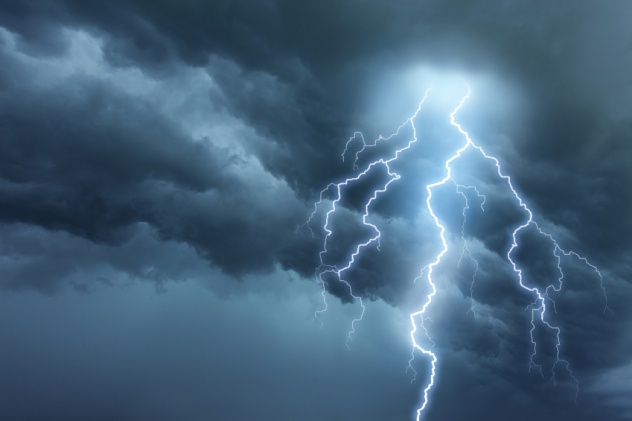
When the hastily prepared three tier-stands at the Corralejas bullring in Columbia collapsed on January 20, 1980, the tragic loss of life was enough to halt the traditional festivities for two decades.
The makeshift stands were erected in the immediate lead-in to the festival each year and then taken down again afterward. Heavy rain had battered the area, and during the bullfighting that afternoon, a sudden thunderstorm hit the area. People in the stands quickly rushed to escape the rain. With the ground underneath already reduced to a mud bath, the stand gave way.
Some people leaped from the stands in an effort to save themselves, while others ran in any direction they could, including the bull ring itself, which contained four large and angry bulls. Many people, including young children, were trampled to death in the panic. In total, 222 people lost their lives, with hundreds more injured.
Around 40,000 people were in the stadium or at nearby concession stands when the disaster occurred. The aftermath was complete carnage. One witness described seeing “blood everywhere” and corpses left where they had fallen.
7 Incidents At Baltimore’s Memorial Stadium

Although there haven’t been any mass disasters at the old Memorial Stadium in Baltimore, two strange incidents, one of them fatal, occurred within 10 years of each other.
On May 2, 1964, just before a baseball game between the Baltimore Orioles and the Cleveland Indians, the worst disaster in the stadium’s storied history unfolded. May 2 was Safety Patrol Day, and 20,000 free tickets had been given out to children as a reward for a year of hard work helping their classmates get to and from school safely.
As the national anthem was being sung, eager and excited young fans were crowding onto the escalator between the lower and upper decks, up to four people on a single step, in an effort to get to their seats. The gate at the top, however, only allowed one person to exit onto the concourse at a time. A bottleneck quickly formed, a mass of bodies piled up, and the children fell back onto each other—while the stairs continued to move underneath them.
By the time anyone knew that something was drastically wrong, a young girl had lost her life, and 46 others were seriously injured. An onlooker stated, “It looked like someone had gone through here with a hatchet.”
On December 19, 1976, only minutes after a football game between the Pittsburgh Steelers and the Baltimore Colts had ended, a small plane crash-landed in the upper tier of the stadium. Miraculously, no one was killed, but the scene sent shivers down people’s spines. Had there been any kind of delay in finishing the game, chances are that the death toll would have been in the triple digits. The pilot, 33-year-old Donald Kroner, was arrested and charged with violating air safety laws as well as destruction of property.
6 Hillsborough Stadium Disaster
Sheffield, England, 1989
April 15, 1989, was undoubtedly the darkest day for English football and a low point for the game in general. At Hillsborough Stadium in Sheffield, England, (home to the Sheffield Wednesday Football Club), 96 Liverpool fans were crushed to death during an FA Cup semifinal game between Liverpool and Nottingham Forest. The tragedy occurred at the Leppings Lane end of the stadium as too many fans crammed onto the terrace. It all happened live on national television.
Since the 1970s, a dark element had crept into the game, namely violence. As one decade gave way to another, this explosive ingredient was becoming increasingly widespread, at least on the terraces. Consequently, crowd control in the 1980s was primarily geared toward halting hooligans.
As a consequence of this, fans were segregated, sometimes by high fencing that resembled cages. This was hardly an image that was beneficial for the sport. In fact, English clubs were eventually banned from playing in Europe, such was the severity of the violence that sometimes followed soccer matches involving teams from the English leagues.
While there was no evidence of “crowd trouble” that Saturday afternoon in April 1989, the caging around the terraces was the reason that fans couldn’t simply spill over onto the field to safety. In the aftermath and the subsequent investigations and inquiries over the years since the tragedy, the South Yorkshire Police have come under much criticism. Accusations have ranged from their priorities that day seemingly being geared more toward traffic flow around the stadium (as opposed to crowd control) to actual covering up of evidence.
5 Estadio Nacional Disaster
Peru, 1964
What was regarded at the time as the worst disaster in Association Football history began on May 24, 1964, when the referee disallowed what would have been an equalizing goal for the home team. Argentina was leading Peru 1–0 with a little over five minutes remaining when the call was made. The fans reacted angrily to the decision, and by the time the ensuing riot was over, 263 people had lost their lives. A week of national mourning was declared by the government, with Lima being described as a “disaster region.”
Many fans were crushed in the mayhem as they tried to flee the stadium while those intent on getting to the referee surged onto the field. Terraces were set on fire, and the whole stadium was awash with tear gas deployed by the police in an effort to calm things—which in reality, only added to the overall confusion and panic. Police on horseback soon entered the stadium in an effort to restore order. The field itself resembled a war zone. Some of the rioters took the violence to businesses and private homes in the immediate vicinity of the ground. Many buildings suffered serious damage.
Needless to say, the match itself was abandoned.
4 Bradford City Fire
Valley Parade, England, 1985
On the afternoon of May 11, 1985, the football ground in Valley Parade, Bradford, witnessed the horrific deaths of 56 people, as well as a further 265 injured. The afternoon had begun as a celebration for the Bradford City Football Club and their fans, who saw the team presented with their first trophy in over 50 years. Before the end of the first half of their showdown with Lincoln City, however, the main stand had become a blazing inferno.
The stand, which had not been upgraded from its original wooden structure, was the victim of a lone cigarette butt discarded by a fan in the crowd. The fire engulfed the entire stand with alarming alacrity. Fire services arrived only four minutes after the fire began, but by then, the stand had been completely obliterated.
Fans ran onto the field in a panic, some in flames, which resulted in people being trampled. Dead bodies were found on the field and at the back of the stands near the turnstiles. An elderly couple was also discovered dead in their seats after the fire was put out.
3 ‘Black Saturday’
Philadelphia, 1903
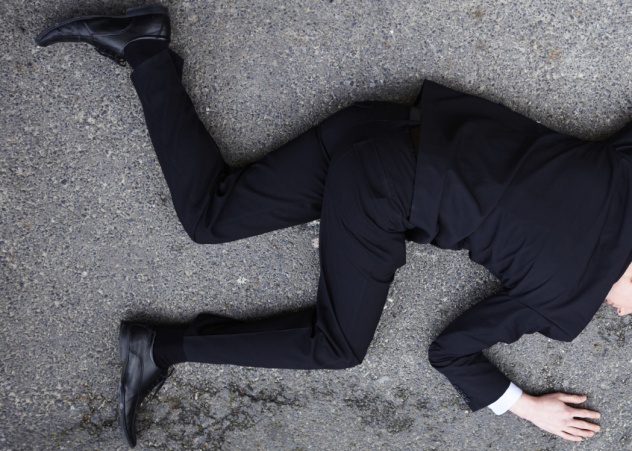
When it opened in 1887, the Philadelphia Base Ball Park (commonly called the “Baker Bowl”) was considered to be the cutting edge of ballpark design. Brickwork had been used throughout instead of wood (although wood was still very much part of its structure), and the stands themselves seated thousands of people. The home of the Philadelphia Phillies was essentially the first “modern” baseball stadium.
Prior to a game against the Baltimore Orioles on August 6, 1894, a fire in the stands burned the modern wonder to the ground. Although there were no deaths and only minor injuries, it was a precursor to the tragedy that awaited it nine years later. The stadium was rebuilt, this time entirely of concrete and steel, and opened again in 1895.
On August 8, 1903, with the stadium now officially called the National League Park, the Phillies were preparing to face off against the Boston Beaneaters. Just before 6:00 PM that evening, a bizarre incident resulted in 12 deaths and hundreds of injuries.
Two men who were more than a little under the influence, were walking past the stadium and enduring insults and taunts from a group of teenagers who were following them. As they walked past the children, one of the men suddenly reached out in retaliation and grabbed one of the teenage girls by her hair, stumbling as he did so and falling on top of her.
The commotion hadn’t gone unnoticed by those in the stadium, especially given the shouts of help from the children below. A crowd began to gather on a balcony overhead, which wasn’t designed to hold that amount of people. It was only supposed to be used as a way into and out of the stand.
It was estimated that around 300 people were standing on the balcony when it came crashing to the ground. Hundreds of people were piled up to four-deep on the ground below. People from the stand kept pushing toward the balcony to see what was happening, and more fell. By the time some kind of order had been restored, 12 people were dead and over 200 were seriously injured.
2 Deaths And Cover-Up At Luzhniki Stadium
Moscow, 1982
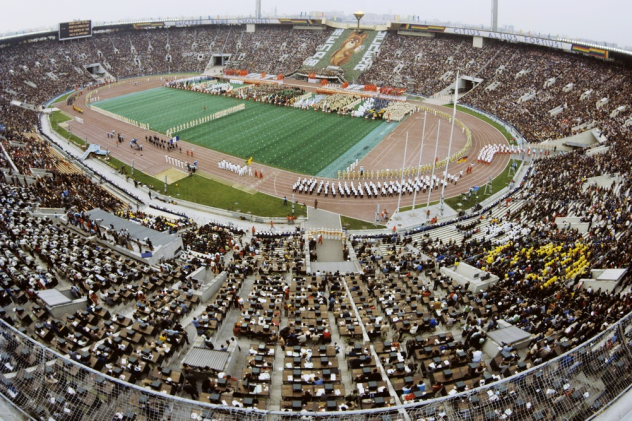
Although the official death toll was put at 66, numerous investigations as well as eyewitness accounts into the disaster at the Luzhniki Stadium in Moscow put the total more in line with over 350, which would make it the worst disaster ever witnessed at a football association game.
On October 20, 1982, Spartak, the Russian team, was battling it out with Haarlem, the Dutch team, to earn the right to progress to the final 16 in that year’s UEFA championship. Spartak was down 1–0 late in the game, and due to the severe Russian winter conditions, many fans decided to leave the contest early to get a head start on their journey home.
However, when the Russian side pulled level with a late goal, many of the eager fans turned to head back into the stadium. The dark tunnels and steps of the grounds were iced over, which made footing difficult. When the fans going back into the stadium met the fans coming out, a problem soon developed. Many people were crushed underfoot, as the militia on guard at the game refused to open side entrances.
Once it became apparent that something had gone terribly wrong, the authorities appeared to “usher” the foreign fans away, opening up alternative exits for them. This was something that the powers that be wanted to keep very much behind their side of the Iron Curtain. The cover-up became more apparent when the Vechernaya Moskva (Moscow Evening Paper) made only this most basic mention of the events: “An incident occurred yesterday at Luzhniki. After the football match, some spectators were injured.”
Perhaps even more worrying is the fact that the dead were said to have been buried in a mass grave. Their relatives were given less than an hour to pay their last respects before they were told they were not to talk of the incident, “especially to foreigners.” If they did so, they could face a lengthy jail sentence.
Only when communism fell in the early 1990s did the pieces of the story begin to be put together of that fateful evening in icy-cold Moscow.
1 2022 World Cup Stadium Deaths
Qatar
If reports are to be believed, the stadiums that will host the 2022 World Cup in Qatar are already haunted by the alleged 1,200 workers who have died while building them. If this figure is indeed accurate, it is a cause for concern for FIFA and many activists worldwide, who fear that workers are not only being exploited, but are working in unsafe conditions, to say the least.
While there have always been deaths while building stadiums or any colossal building, most projects suffer one or maybe two deaths at most. To have a death total in excess of 1,000 six years before the event kicks off is unprecedented. In addition to the stadiums themselves, the construction of amenities and transport links to them has also caused workers to meet untimely ends.
In a World Cup already marred with controversy amid corruption scandals and allegations of vote rigging, it’s hardly the image that Qatar or FIFA would like to project.
Marcus Lowth—writer at Me Time For The Mind, which you can also find on Facebook.
